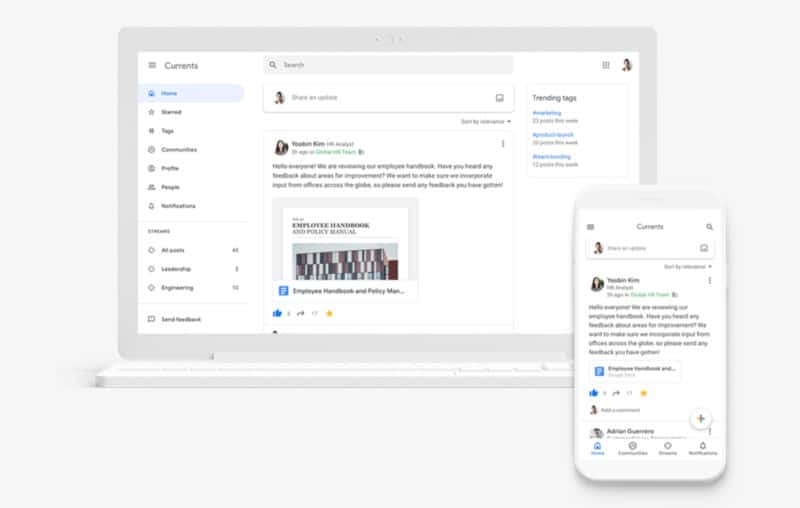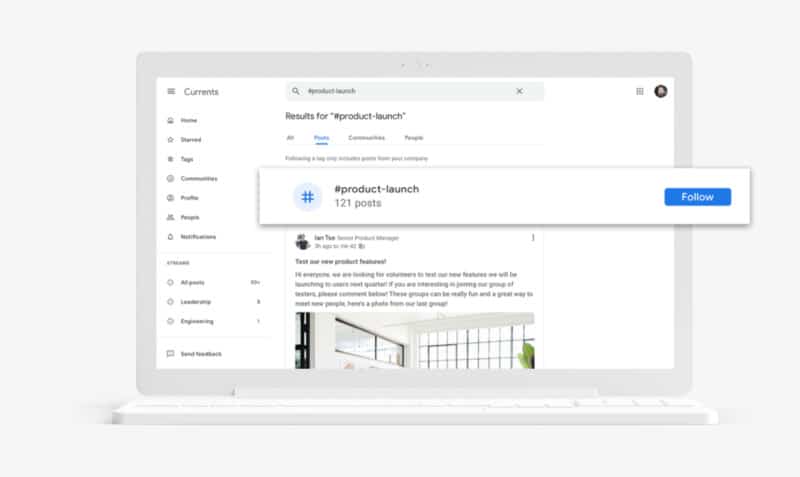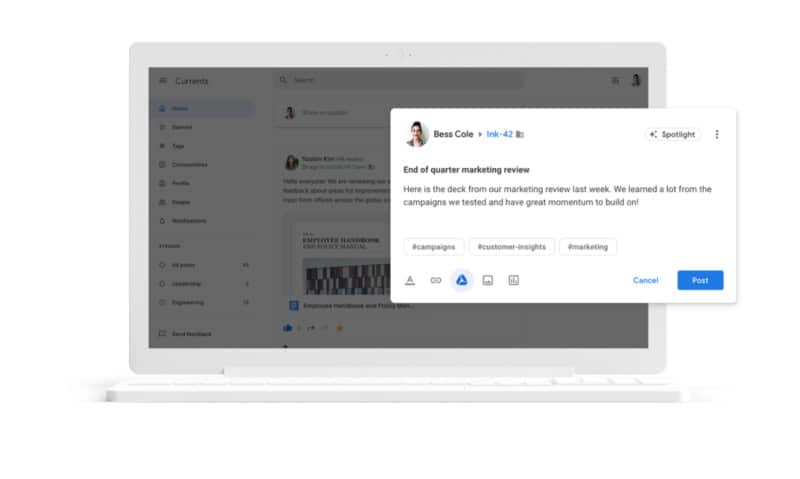Google Currents replaces Google+ but it’s only available to G-Suite users…
Google killed its social network Google+ in April 2019. Google+ lived on though, albeit inside Google’s G Suite of tools. Google hasn’t given up on the “concept” of Google+, however, and will soon launch Google Currents, its successor, on July 6.
What is Google Currents?
Google Currents is essentially a rebranded version of Google+. It’ll be available to all G-Suite users and, rather than focus on consumers, will instead focus its energies on enterprise and business users which is likely a smart move, given just how saturated the current social networking market is.

Google says, “Currents makes it easy to have meaningful discussions by enabling leaders and employees to exchange ideas across the organization and gather valuable feedback and input from others — without flooding inboxes.”
The UX for Google Currents is more or less identical to Google+ layout, so it should look and feel very familiar. Currents will run on tags, as Google+ did, but the bigger idea at play here is to aid inter-company communication between employees and collaborators. In this respect, Currents is a bit like a social networking version of Slack and Teams.
READ: How To Use Google Drive Like A Pro
“Admins can shape the discussion in the organization by creating custom streams to promote specific content to a targeted set of employees or the entire company,” said Google.
It added: “Additionally, admins can measure engagement across the platform with metrics to track usage and understand what content is resonating across the organization.”

Google Currents has been in beta for several months now. But this week Google confirmed Google Currents would be fully released on July 6. Google sent out a press release this morning, confirming what admins and managers need to know about the release and changes Currents will bring.
Here’s a brief overview of what Google highlighted in its Google Currents release:
- Beginning July 6, 2020, users will be transitioned to Currents on all platforms. Currents provides users access to new features, including custom company streams, content discovery, and routing via tagging.
- Users of the iOS and Android Google+ mobile apps who have auto-update enabled will be automatically upgraded to the Currents mobile app, which replaces their existing Google+ mobile app. Other users will be prompted to upgrade to the new Currents mobile app (via redirection to the appropriate store) so they can continue using the service.
- All existing links to plus.google.com will continue to work, as users will be transparently redirected to currents.google.com.
- In the days prior to this switch, your users may see a banner in Google+ apprising them of these changes and linking them to relevant Help Center content.
Do Existing Google+ Users Need To Do Anything?
No, Google will transition Google+ – including iPhone and Android apps – over to Google Currents seamlessly. All you have to do is wait, and when July 6 rolls around you’ll be using Google Currents.
What Happens To My Google+ Data?
Google has confirmed that ALL Google+ data, so posts, comments, likes, and people you follow, will all be migrated over to Google Currents. You will not lose any valuable data or information in the switch-over – at least, that’s the plan, anyway.
Google Currents Features Overview

As noted earlier, Google Currents will function much like Google+. At its core are the following features which can be used to create, engage, and communicate:
- Streams – Streams are were all the latest posts, updates, and content are stored. Inside Streams, you will find unread posts, department-wide news, and updates from admins. Think of Streams as your Facebook profile’s homepage. It’s where everything is curated and stored for your consumption.
- Tags – Tags will form a significant part of how Google Currents functions. Tags are used to designate relevance to posts and updates. For instance, if you have a post or update that is essential reading for the marketing department, you could tag it #marketing – this would ensure that everybody in marketing is notified when it is published. Companies will be able to create their own, bespoke tags which enable better management of content and ensures the entire workforce is on the same page.
- Types of Post – Currents supports a range of post types, just like Google+ did. At launch, you will be able to do the following things from the compose window: Post titles, Use text formatting options, Add links to text, Add Google Drive files such as documents, presentations, and spreadsheets, Insert topical tags.
Google Currents will be part of Google’s G Suite of applications. Interested in G-Suite? You can test G Suite free for 14 days as well to see what’s right for your organization.

